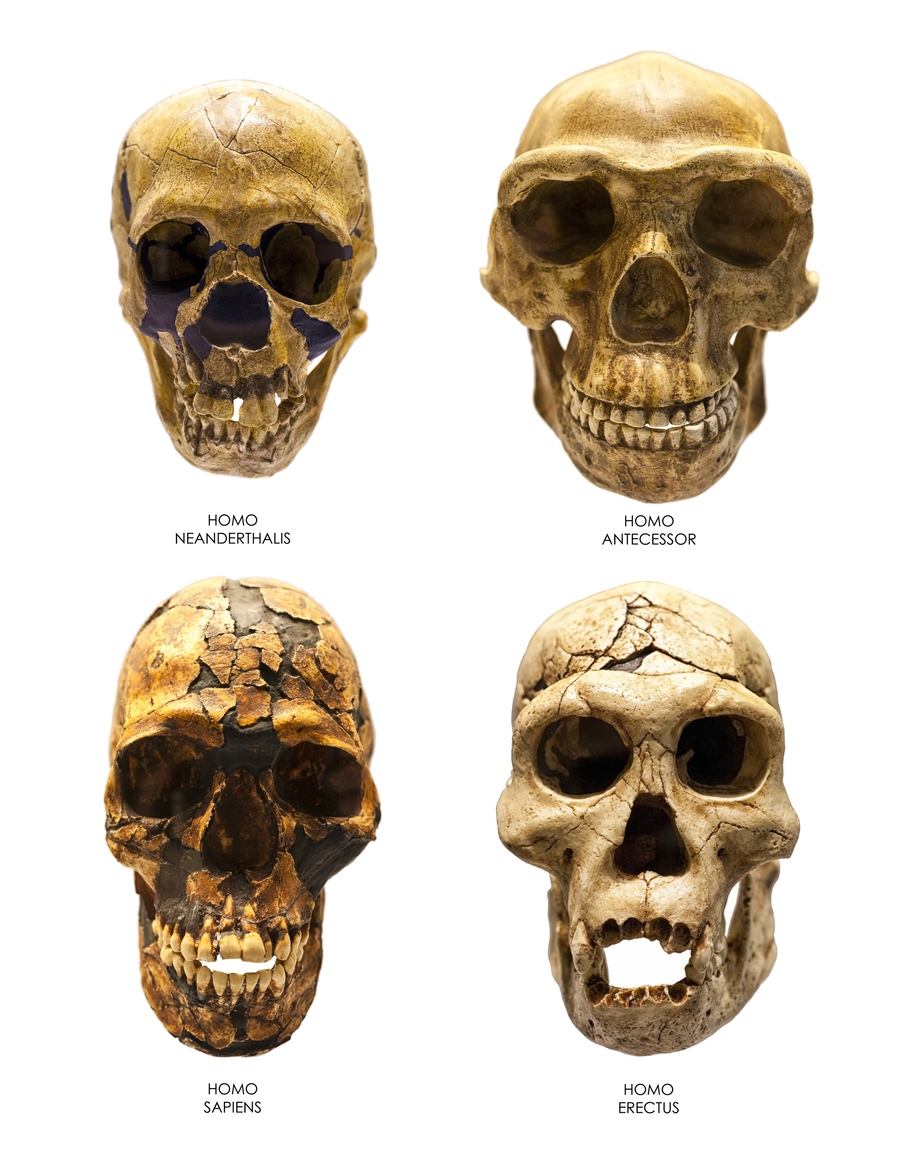Stirring up controversies have always been an enticing premise for man. Some do it out of curiosity, some have a voracious desire for the fame (good or bad) that comes with it, and others are just bored. But whatever the reasons, the brouhaha and frenzy that stir up can become a source of Urban Legend and folklore. Some hoaxes have also been able to either change the course of history or threaten to do almost just that. One such, rather legendary hoax, was that of “The Piltdown Man,” an infamy that almost cemented the “Man-was-Ape, Ape-was-Man” school of thought.
Who, What, When: An Introduction of the Hoax
In 1912, Charles Dawson, a lawyer by trade and an amateur fossil hunter by penchant, came across what he claimed was “The Missing Link” of the Neanderthal-Human chain. [1] Five years prior, in 1907 a mine worker in Germany unearthed bones of a Homo-heidelbergensis, which had catalyzed the archeological industry and experimentation in Germany. That and a looming inevitability of World War I had set the UK’s archaeological guild and fraternity quite a few steps back.
Dawson had claimed that he had excavated a portion of a human skull in the village of Piltdown, Sussex, that will surely give the Homo-heidelbergensis a run for its money. [2] He claimed that the skull is seemingly that of a big-brained ape, which can be accurately declared the ancestor of the modern man and the missing link between the Neanderthal and the Homo-Sapiens. Such a discovery could have been the Holy-Grail of the archaeological fraternity of the nation and thus had the attention of the scientific think tanks of the nation.
The Unique Selling Proposition of the Hoax: The Details
Charles Dawson claimed that he first got a piece of the skull from a workman laboring at the Piltdown gravel pit, when he chipped off what he thought was a fossilized coconut. The discovery got Charles interested, who traveled down to the site and started exploring and excavating.
Dawson reported that the visits were fruitful as he would find more and more fragments and bits of the skull. He would take the fragments to Smith who was at the time a keeper of the Geological Department of the British museum. [3] The findings equally intrigued Smith and his curiosity encouraged him to join his friend’s archeological exploits. The two made several visits and found a good amount of fossilized evidence together. It was Dawson who found most of the skull and the lower half of the jaw of the said Homo-heidelbergensis. [4]
Among the findings were other elements such as ape-like mandibles, some eroded molar teeth, stone tools and some other fossilized animals.
What made The Piltdown Man So Popular?
The focal point of intrigue about the skull found was that it was remarkably like that of a modern human in comparison to the fossils found so far at the time. The major difference was the “Occiput” and the “brain size.” [5] Even though the brain size was an estimated two-third that of a human brain, the jawbone of the skull was intricately similar, almost indistinguishable from that of a modern chimpanzee.
The human-like skull paired with chimpanzee/ape-like construction seemed to generously substantiate the notion of the human-ape connection. It was a notion that had long been debated and with many theories already existing around the idea, such a finding was almost anticipated. The Piltdown Man substantiated a preponderant scientific belief of the time that the large modern brain outdated the modern omnivorous diet, and the crafty construction of the human skull and ape jaw backed the notion visibly.
A Hoax that Could Have Fooled the History and the Future About the Origins of Man
The local media and the world got wind of the alarming discovery and the world was eager to learn more. The December 19 issue of Nature reported, rather excitedly:
“The fossil human skull and mandible to be described by Mr. Charles Dawson and Dr. Arthur Smith Woodward at the Geological Society as we go to press is the most important discovery of its kind hitherto made in England. The specimen was found in circumstances which seem to leave no doubt of its geological age, and the characters it shows are themselves efficient to denote its extreme antiquity. (p. 438)” [6]
The Geological Society of London wholeheartedly embraced the discovery when Dawson and Woodward pitched their initial findings. It is a grand scientific breakthrough that could have placed them eons ahead in the realm of Paleontology. Moreover, it would have marked England as a historically significant piece of land where the early man would have thrived and evolved.
All in all, the brouhaha that the Piltdown Man has stirred up was good enough to leave the scientific world baffled, experimenting, and debating for an estimated 41 years after the discovery.
Undoing the Hoax
Even though the Piltdown Man findings were scrutinized critically from the very beginning, the first major experimental critique came in 1949. A new dating procedure, measuring the amount of fluorine in the bones was conducted on findings by Kenneth Oakley of the British Museum of Natural History. The results declared that the bones were merely around 50,000 years old. Moreover, newer and more veritable discoveries around the world such as that of the Pithecanthropus and Australopithecus made the Piltdown Man more of an anomaly on the scale of Evolution.
Such discoveries led to more severe experimental scrutiny of the Piltdown Man in the brief period of 1953-1954. [7] The experiments hinted more and more on the fact that the skull and jaw were doctored meticulously. It revealed, quite conclusively, that the skull’s cranium was of a human that was no more than 600-year-old and the jaws belonged to an orangutan with teeth from an orangutan and a chimpanzee. Chemical examinations proved that the fragments were carefully stained with a chromium and iron sulfate solution. These findings were a greater undoing as neither of the two chemicals were present in the natural land of Piltdown.
The Culprit Behind the Piltdown Hoax
Initially, everyone who was involved with the discovery or somehow linked with the places connected with the discovery, became the suspects, with Dawson being the prime malefactor of all the chicane. Though his ambition to be a part of the Royal Society was high, some were not convinced of him being the only culprit or the culprit. From Dawson’s main man, Woodward to his comrade Samuel Woodhead, everyone was considered as party to the crime, with Samuel being the supplier of chemicals and bones that were used for experimenting on the specimens.
Other names that were suspected of being the miscreants were Sir Arthur Conan Doyle for his interest with fossils and his acquaintance with Charles, Pierre Teilhard de Chardin who was paleontologist and was the one who went along for the collection of the fossils, and Sir Arthur Keith who, at that time, worked at Hunterian Museum of Royal College of Surgeon as a conservator and the anatomist.
As the Mystery Unfolds
Though all the names mentioned above could have been the perpetrator as they were directly or indirectly linked to the discovery, 1996 altered the whole scenario when a trunk was found, lying in the British Museum. All the evidence found and the initials on the trunk brought the zoology keeper to the limelight. It seems that Martin A.C. Hinton, the keeper, had requested weekly pay which was not accepted by Woodward and resulted in the resentment to humiliate Woodward. Pity all of it was for a vengeance.
No matter how fickle it sounded yet the discovery had some weightage unless the advancement in technology and forensic science shed light further, and again, on Charles Dawson. With DNA analysis and spectroscopy, in 2016, it was clarified that the expertise with which the specimen was forged could only be done by Dawson. The involvement of others cannot be brushed under the carpet, but Dawson’s skills related to geology and archeology, his findings of fossils, and the immaculate way in which the specimen was fabricated make Dawson the main culprit. [8] Not to forget his imperishable desires and ambitions to be part of the prestigious Royal Society community that compelled him to act with malice.
The Damage That Still Haunts: The Impact of Piltdown Man Hoax
While Charles Dawson might be responsible for forging the evidence and maligning the scientific research process, he alone cannot be blamed for hoodwinking the scientific community. The biases within the community brought shame to it. [9] The truth, though bitter, has substance to it. The fact that when in 1925 Raymond Dart presented his discovery of the Taung skull, many doubted it. Their biases to go with his discovery was due to few alarming reasons, mainly the fossil had African origin and had smaller brain size. Their patriarchal stance towards the specimen, which Raymond considered as being the earliest human ancestor, resulted in delaying the research on the fossil.
The Biases in Science
Besides the prejudice, hiding research information or keeping it accessible to the scientific community for the fear of it being reproduced, halted the progress in the evidence of human evolution research. The idea of a larger human brain became the nucleus of the research, leading scientists to beat about the bush in their quest for more fossils from England. The fraudulent intent of one casted doubt over the whole scientific community. This made people apprehensive regarding the discoveries of other paleontologists working for “human evolution research”.
Not only that, but a considerable amount of time and money was invested in search of a “missing link” that was never there in the first place. It further maligned the reputation of many scientists who had their inclination towards the Piltdown man and as a result, they spent years in search of finding the missing link of the discovery.
The Lessons Learnt the Hard Way
Undoubtedly, Piltdown Man gave a severe blow to the science community, but one thing that came out of all the forgery was the realization to be transparent and more welcoming towards sharing the research, and making scientific evidence accessible to the community for a larger benefit of science and research.
The hoax paved way for the open science movement that otherwise would not have been a possibility. It is important that as a researcher, one stays true to the cause, that is scientific evidence that could benefit the research and forward the cause. It further shed light on the inherent scientific bias of the community and highlighted how it can damage the progression of the research.
Interesting Facts of the Hoax
- Charles Dawson was not even a scientist! By profession, he was a lawyer.
- “Eoanthropus dawsoni” was considered the “missing link” between ape and the man!
- The “need” to prove superiority of Britain over the rest of the world resulted in the hoax being accepted with open arms.
- Piltdown Man could be the rival for Homo heidelbergensis, the specimen found in Germany. No wonder Britain wanted to compete!
- Franz Weidenreich, the “German anthropologist” did have his reservations with the specimen, for him it was filed teeths of an orangutan fitted with a human skull.
- It was not until 1953 that Franz was proven right. A good three decades to accept his theory!
Conclusion
The Piltdown Man, though, overshadowed the trust of people over the scientific community and still haunts the community. But it is still relevant as it cleared the doubts regarding the initial discovery pertaining to the size of the human brain. The fact that Homosapiens’ had a large brain and the discovery, however forged, of Eoanthropus added relevancy to it, causing further reliance on the hoax.
The forgery further opened the eyes of the scientific community of the biases that were breeding within the community and disrupting the free flow of information, which is an essential element of any research or discovery. The Open Science Movement allowed further discoveries, made science accessible to laymen and has opened doors for many young brains who have the potential to make remarkable discoveries for a better future of the human race.
References
[1] 1912 – Piltdown Man ‘discovered’ in England. (n.d.). The Australian Museum. https://australian.museum/learn/science/human-evolution/piltdown-man-skull/
[2] Piltdown Man. (n.d.). Natural History Museum. https://www.nhm.ac.uk/our-science/departments-and-staff/library-and-archives/collections/piltdown-man.html
[3] Study reveals culprit behind Piltdown Man, one of science’s most famous hoaxes. (n.d.). Science | AAAS. https://www.science.org/content/article/study-reveals-culprit-behind-piltdown-man-one-science-s-most-famous-hoaxes
[4] Long, R., & University of Melbourne. (2023, April 24). The legacy of a great scientific hoax. Pursuit. https://pursuit.unimelb.edu.au/articles/the-legacy-of-a-great-scientific-hoax
[5] The Christian Science Monitor. (2016, August 11). Piltdown Man: Scientists finally get to the bottom of notorious scientific forgery. https://www.csmonitor.com/Science/2016/0811/Piltdown-Man-Scientists-finally-get-to-the-bottom-of-notorious-scientific-forgery
[6] Piltdown Man – Conservapedia. (n.d.). https://www.conservapedia.com/Piltdown_Man
[7] Folklore, belief, and the Piltdown Man hoax. (2016, August 29). Library of Congress Blogs. https://blogs.loc.gov/folklife/2016/08/folklore-piltdown-man-hoax/
[8] Study reveals culprit behind Piltdown Man, one of science’s most famous hoaxes. (n.d.). Science | AAAS. https://www.science.org/content/article/study-reveals-culprit-behind-piltdown-man-one-science-s-most-famous-hoaxes
[9] The piltdown hoax | Biology | Visionlearning. (2017, November 2). Visionlearning. https://www.visionlearning.com/en/library/Biology/2/The-Piltdown-Hoax/263



